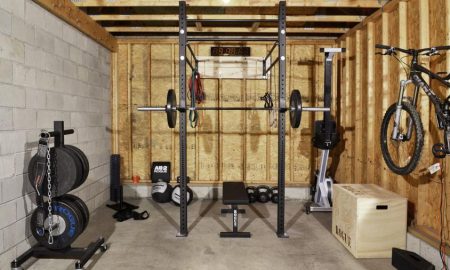
When you get home from a grueling run or HIIT session, you’ll have a good idea of what the next few hours will hold, rehydrating, refueling, and waiting for the muscles aches to creep in as they begin to repair and rebuild.
There are supplements like protein, creatine, and even ibuprofen that can all speed your recovery. Now there’s ones more supplement to add to that list, weed. Plenty of people already use cannabis, and it’s becoming increasingly popular and legal across the US, prompting many more to try it. However, one big question remains, Can cannabis help you recover, or is it just a myth?
What does science say about weed and athletic recovery?
While there are plenty of studies into marijuana’s effects, most are looking at the harm rather than the good. So there is very little research on how marijuana works as a recovery aid for most healthy adults.
There isn’t anyone funding or doing studies into what happens when you run a 10k, get home, and smoke a joint.
It’s unlikely that cannabis has any measurable effects on muscle protein synthesis. Can cannabis help clean the biological debris and reduce the swelling that comes from post-exercise inflammation? We don’t know.
Several studies prove cannabis is an anti-inflammatory, but it’s not known if the effect is sufficient to really help repair muscle damage and get you back on the track or in the gym any quicker.
Despite the infancy of research in this area, we know enough about the biological action of THC and CBD to understand the basic principles of why incorporating cannabis products into their routines could benefit athletes.
What we do know about weed.
Cannabis and its derivatives are widely used to find relief from a wide variety of conditions – be it depression and anxiety, stress, physical ailments, or just a dip in your mood.
So it’s no wonder athletes are taking note of the medicinal benefits of CBD and THC to see if they can indeed help athletic performance and recovery.
In one aspect, lighting up post-workout may help you recover faster as it will delay the onset of muscle soreness (DOMS).
THC has been proven to reduce sensations of pain, so it can be instrumental in dealing with the discomfort caused by overly sore muscles, which may help get you back to the gym quicker.
While we don’t have any data on cannabis effects on the type of pain gym junkies are most familiar with, we do know that cannabis most certainly alleviates aches.
According to a massive meta-analysis by the National Academies of Sciences Engineering and Medicine in early 2017, cannabis significantly reduces chronic pain.
Of course, chronic pain isn’t different from the acute pain that DOMS falls under, but other studies have proven effective for acute pain relief.
While the pain relief isn’t likely to be as effective as, say, taking Advil after a run, it’s certainly safer for you.
After all, every nonsteroidal anti-inflammatory drug (NSAIDs), which include ibuprofen and all its derivatives, comes with a risk, even slight, when you combine them with exercise.
Even over-the-counter drugs can have negative effects if used in the wrong scenarios. NSAIDs, for example, can increase your risk of rhabdo or full-blown kidney failure if you are dehydrated, and long-term use can lead to ulcers. Cannabis, on the other hand, has no such harmful effects when taken after a workout.
What’s the best way to take marijuana?
Cannabis behaves differently depending on how you take it. Edibles, tinctures, smoking, and vaping have different absorption times.
If you inhale, you get a direct and almost immediate effect in about 10 minutes.
Taking edible, you have no real gauge or control over when CBD and THC will kick in. This can cause an issue with inexperienced users as they may think the dose is not enough then consume some more. Then both doses finally hit you at the same time, and you end up greening out.
Taking edibles that may take 1 to 3 hours to kick in isn’t going to help you if you’re experiencing soreness now.
Vaping cannabis oil or other extracts is relatively healthy, but there is some concern over the extraction process, leaving residual solvents behind, and some fake or poor quality cartridges may contain chemicals that aren’t good for you.
However, using a trusted dispensary that has all the products lab tested and clearly labeled will minimize these risks.
Vaping dry herb is perhaps the safest and most recommended avenue.
It’s healthier than smoking a joint or taking a bong hit as there’s non of the chemicals released from combustion. With the pure herb from a legally registered and licensed source, there should be no impurities. Just make sure you keep your smoking instruments clean and use a water pipe glass repair kit if there are any issues or obvious defects.
Using a dry herb vaporizer is very easy and convenient. Something like the Lookah Ice cream dry herb vape pen is a pocket-friendly vape that’s ideal and won’t break the bank.
Although if you are looking for a less potent experience then using products like these Delta 8 Disposables may be the best option. This is because they contain the delta variant of THC which is said to be milder and promote positive mood and calmness, as opposed to other THC strains which have been known to lead to paranoia.


















Follow Us